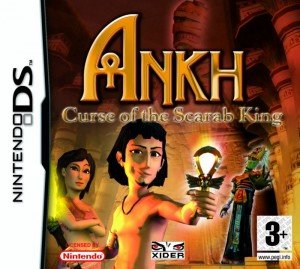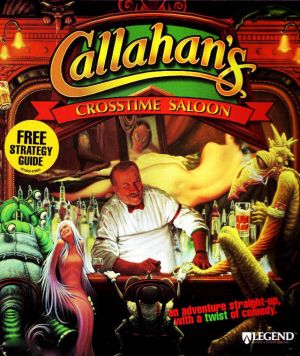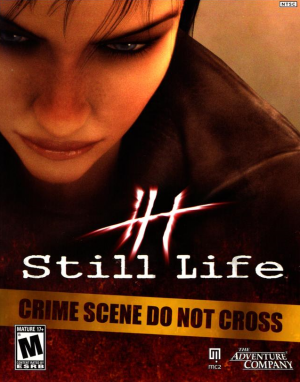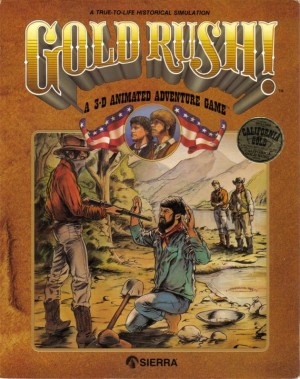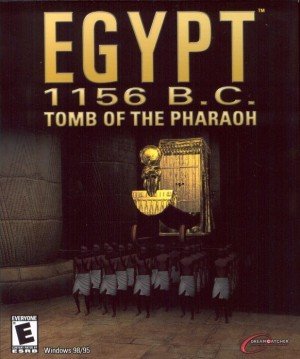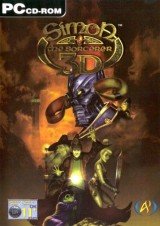Review for Ankh: Curse of the Scarab King
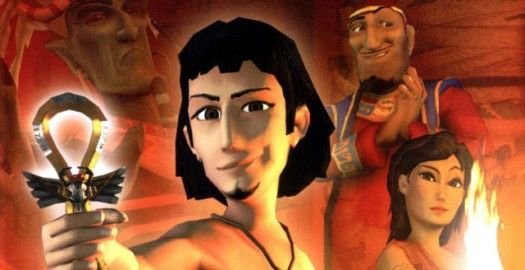
We love 'em, but let's face it: adventure games aren't exactly famous for their high technical specs, awe-inspiring graphics, or groundbreaking physics systems. It doesn't take a lot of horsepower to tell a good interactive story, but this understated approach has ensured the adventure genre remains a niche loved by its diehard fans and more or less ignored by the general gaming public. For a while there, it was looking like adventures could go the way of the dinosaur--err, I mean the Commodore 64--or at least that they'd be forever relegated to the back shelves and bargain bins by an industry that had grown too big to appreciate the minimalist approach most adventure games take. Then the skies parted, the angels sang, and the Nintendo DS dropped from the heavens.
Hyperbole aside, the handheld DS's low specs, touch screen, and stylus make it ideal for the simple graphics and point-and-click interfaces adventure games are known for. Now in its fourth year, the DS has already become a popular system for the genre, with titles such as Another Code / Trace Memory, Hotel Dusk, the Touch Detective series, and the evergreen Ace Attorney series leading the way, but with only a few such releases hitting each year, the offerings have been sparse for hungry adventure gamers. Now that PC developers have had a little time to catch up, we've begun to see a larger and potentially more pervasive phenomena: DS ports of existing PC adventures. But is squeezing (relatively) low-spec point-and-click PC games onto the DS as much of a no-brainer as it seems?
One of the early adopters was Ankh: Curse of the Scarab King, the first chapter in the comedic trilogy from German development studio Deck13. Compared quite liberally to the LucasArts adventures of the 1990s, the original PC release was a real-time 3D game with a third-person perspective and a point-and-click interface. The player takes the role of Assil, a troubled ancient Egyptian teen who has been afflicted with a death curse by an angry mummy. While seeking an audience with the Pharaoh and Osiris to get the issue cleared up, he hooks up with a girl named Thara who becomes a playable character for a portion of the game. When Ankh was released in 2006, its tongue-in-cheek humor and colorful cartoon artwork set it apart from the dark, serious games that had become common in the genre, and the game became popular enough to warrant two sequels.
On DS, the real-time 3D graphics have been replaced by prerendered 2D backgrounds and character sprites that can be moved across the screen either by tapping the stylus where you want them to go or using the +Control pad. Dragging the stylus makes the character run, which is nice at points when you have to backtrack through several screens, but unfortunately there's no +Control pad equivalent for running. Most of Ankh's action takes place on the touch screen, with a map and close-ups of certain graphics occasionally displaying on the top screen and cutscenes sometimes spanning them both.
In addition to being used for movement, the cursor has several states that allow you to interact with the environment, including "look at," "use," and "pick up." On PC, Ankh employs a smart cursor that changes to the most appropriate state for the hotspot you're interacting with, but in the DS version, the cursor doesn't change automatically and you must select the state yourself from a bank of icons at the top of the touch screen. This can become tedious because you need to anticipate if you're supposed to look at, pick up, or use something, and if one of these states doesn't work, the game doesn't provide adequate feedback for you to know you should try another. Several times, I missed items and then had to go back to get them, because I assumed incorrectly that I had exhausted an item's usefulness without trying all available options.
This is the first DS game I've played that has full voice acting, not only in the cutscenes, but also when the player character is just poking around. I wish I could say this is a plus, but it's so poorly implemented I ended up turning off the volume. The problem is that the character communicates out loud every time you try to do or select something. In a PC game, this would be fine, because you can sweep the cursor over the screen, looking for active hotspots, before making a commitment and clicking. On the DS, the step where you move your cursor around to investigate has been removed, and the only way to find out if an area is selectable is to tap it with the stylus or select it with the A button, at which point, more often than not, Assil or Thara says "It doesn't work." This gets old fast, and I wish more thought had been put into how the player interacts with the game world, rather than simply slapping the PC behavior onto a handheld. Although the stylus and the mouse are similar, they don't work exactly the same way, and trying to use the stylus as if it were a mouse doesn't work well in Ankh.
Another problem is that some hotspots are too small or too subtle, often blending into the backgrounds. Ankh's backgrounds are crammed with detail, and hotspots that stand out perfectly well on a PC screen can be practically invisible on the much smaller DS screen. As a result, I once again found myself clicking all over the place in hopes of finding interactive objects (with Assil and Thara's repetitive voice lines making this practice even more annoying), then going to a walkthrough because I'd missed a tiny or inconspicuous hotspot.
The characters in Ankh are fairly animated, but their gestures are jerky and unnatural, and often don't match the tone of what's being said. This is true in the PC version as well, but for some reason it stood out to me more on the DS. Granted, even such exaggerated gestures are more lifelike than the statue impersonations in some adventures, but I'd welcome a balance between these two extremes.
Although you switch between Assil and Thara at points in the game, in the DS port you can't pass items between them. Since Ankh was originally designed based on the premise that you'd be able to pass items between the two characters, this limitation can lead to a dead end situation at least once that I encountered. In fact, this port has several egregious bugs that make me wonder how it got through Nintendo's approval process. I encountered three showstoppers that prevented me from continuing. Two were logic issues that I was able to work around by loading previous saved games, but according to a post on the publisher's tech support forum, the last bug, which happened about two thirds of the way through the game, would have required turning off background music (which is on by default) and starting over from the beginning. No thanks. These bugs suggest the game was rushed out the door, and should give anyone considering playing the DS port serious pause.
Unlike other DS ports which remain almost identical to their PC counterparts, some of Ankh's puzzles have been simplified, presumably because they didn't translate well to the new 2D perspective and the DS's small screens. This is most obvious in a section that takes place in Osiris's temple. The original puzzle involved repeating a series of steps depicted on an Egyptian mural. In the DS version, the same mural is displayed as on PC, with Assil and Thara drawing the same conclusions when they view it, but the steps you actually need to follow have changed. Whatever the reason for making such a change, it's a sloppy execution that reeks of the developers looking for a quick fix without following through to ensure a fair solution for the player. This problematic puzzle is made more difficult by the fact that either Assil or Thara can pick up an item, then not pass it to the other. Each needs to be holding a specific set of items for the correct solution, so as I flailed around, trying to follow the steps laid out in the inaccurate mural, I never knew if I was on the right track or if I'd already shot myself in the foot by distributing my inventory incorrectly.
Curse of the Scarab King's multitude of problems were all the more disappointing since I had high hopes for Ankh on the DS. But after my glitchy, frustrating experience playing it, I unfortunately can't in good faith recommend this port to anyone but the most diehard DS devotees (and maybe not even them). If you've already played the game on PC, you've already experienced it in a much more enjoyable format. If you haven't played it yet, the PC version is the way to go.




